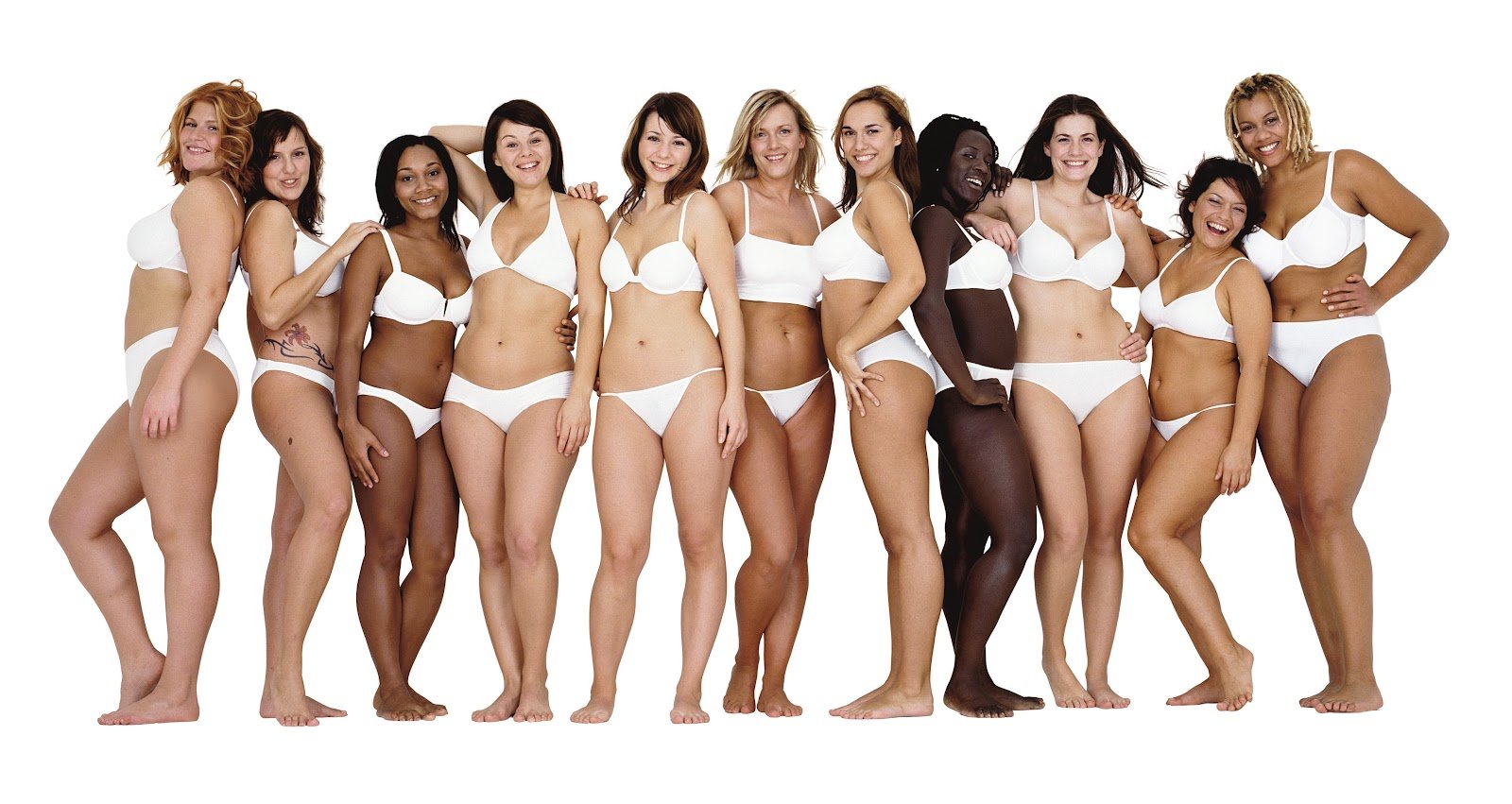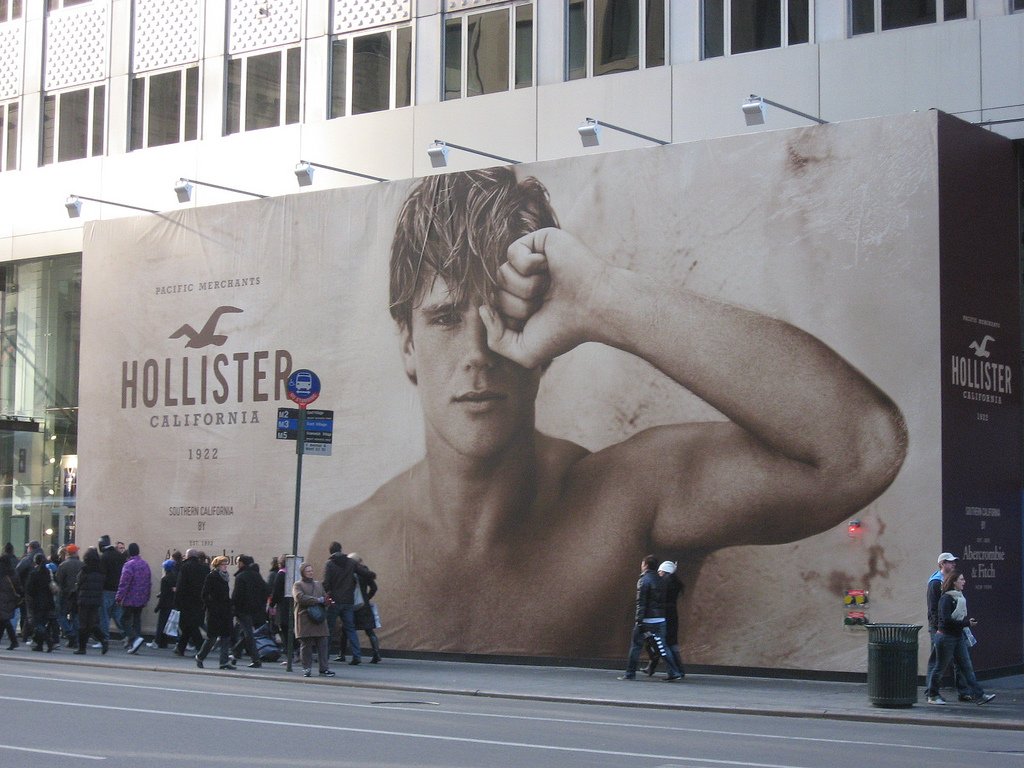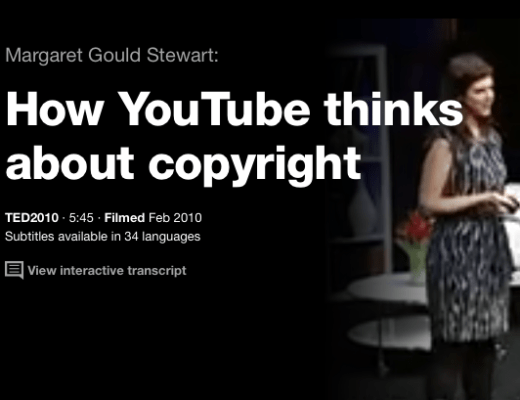OR: IS IT REALLY ANY OF MY BUSINESS?
So I have this problem. I don’t believe in positive discrimination.
I don’t think that positively discriminating in most situations is the correct way to promote tolerance, understanding and ultimately equality. In feminism in particular I do not believe that the way to force equality to happen is by doing things like setting quotas for the number of employees, for example. It just breeds resentment and prevents the best people from getting the job, if the best person happens to be male. This is a little besides the point, but I’d like to set out my stall as to where I’m coming from. I don’t believe that positive discrimination is a good thing. If I got a job due to positive discrimination, for example, I’d never feel comfortable in my role and I’d feel pretty uncomfortable as a person.
 Here’s a great example of an utterly bizarre form of positive discrimination by Dove as part of their Real Beauty campaign. The campaign said that ‘all’ women are beautiful. And yet the campaign only shows a certain type of woman in their underwear. Yes, they seem to have hit the ‘racial discrimination’ quota, but ALL of the women appear to be something around a size 12, with a tummy and a decent pair of norks. None of the women appear to be underweight, overweight, muscular, disabled or transgender. In addition they all have shoulder length hair and perfect teeth. Did you notice that?
Here’s a great example of an utterly bizarre form of positive discrimination by Dove as part of their Real Beauty campaign. The campaign said that ‘all’ women are beautiful. And yet the campaign only shows a certain type of woman in their underwear. Yes, they seem to have hit the ‘racial discrimination’ quota, but ALL of the women appear to be something around a size 12, with a tummy and a decent pair of norks. None of the women appear to be underweight, overweight, muscular, disabled or transgender. In addition they all have shoulder length hair and perfect teeth. Did you notice that?
As someone who is short, on the muscular side, size 6-8 with a bald head and bad teeth, I’m starting to feel pretty worthless about now. Because ALL women can be beautiful, as long as they fit what Dove tells us is beautiful.
That’s the problem with positive discrimination, you start to leave people out. You can talk about how we should be completely egalitarian, inclusive and diverse, but where do you stop when you’re fundamentally talking about creating an image with only so many pixels to use?
I come from a weird place with my photography, a place where standards of beauty and what’s ‘right’ gets twisted. In a previous iteration I was a full time fashion photographer, working in studios with some of the top commercial models in the country. This picture below, the girl at the far end in the white jeans? That was my stylist. And I’m standing next to her in the grey leggings. I can pick out at least five or six models from this line up who we regularly had in the studio.
 In fact this guy below, we regularly had him in the studio. (He was such a sweetie.)
In fact this guy below, we regularly had him in the studio. (He was such a sweetie.)
 So why am I posting these picture of hot guys? Because I want you to understand where I come from with my photography. This was my world, until I gave it up. Judging people against impossibly high standards of beauty was what I did. I’m not saying this was nice, or that looking back I particularly enjoyed it, but it’s part of what shaped me and my photography and it’s where I come from.
So why am I posting these picture of hot guys? Because I want you to understand where I come from with my photography. This was my world, until I gave it up. Judging people against impossibly high standards of beauty was what I did. I’m not saying this was nice, or that looking back I particularly enjoyed it, but it’s part of what shaped me and my photography and it’s where I come from.
What is it that they say? You cannot change your past but you can change your future.
However.
Recently I became aware of something interesting. When I meet a person socially I don’t make judgements against them. I don’t think in my head ‘this person is black’ or ‘this person can’t walk properly’ or ‘this person is overweight’.
I’m going to stop here for a moment and say something. My interest is in feminist academia. I campaign and write about other -isms when they intersect with feminism. I have limited knowledge in this field so I’m probably going to express myself wrongly here. I also have lots of friends who call themselves by nicknames related to their skin colour, sexuality or disabilities and so sometimes I genuinely have not realised that a word was ‘wrong’ to use, because my friends use it to describe themselves. In fact I think the word disability is probably wrong, but I don’t know the right word to use. So mea culpa – I beg forgiveness before I start.
If you asked me how many black friends I had, I’d struggle to know. Same with gay friends or disabled friends. I just have friends and to be honest their backgrounds, ethnicities, sexualities or not-quite-working-right-bits are all as interesting to me as any other friend. Each person has their own story to tell, which they tell on it’s merits rather than because they are a certain type of minority.
I just see people as people. I’m not particularly interested in their gender, ethnicity or health status (that might be because I’m a misanthrope and not that interested in people in general an awful lot of the time – at least I’m honest). But apparently most people don’t think this way. Apparently most people do notice these things right off the bat. And apparently most people judge.
Well lets be honest, I know most people judge, as someone who generally presents as female I experience this all the time. And because I have experienced this judgement in my life, I try not to apply that to other people.
I’ve got to the point in the blog post where I realise I’m wandering off track and I say ‘where am I going with this?’
So where am I going with this.
I suppose what I’m trying to talk about is the fact that when you take a photograph as a creative exercise rather than a purely documentary work, you’re making aesthetic decisions. In fact I’d go one step further in that in pure documentary photography you’re also making aesthetic decisions – it’s just that they might be governed by a slightly different set of ideals.
Creative photography is almost exclusively about aesthetics. Ultimately you select images on if you think they look good to your eye or that they tell the story that you, as a photographer, are trying to tell. Every photographer has different things that they look for in a creative image and indeed those things can change from client to client and job to job.
So LRP photography for me is governed by a particular set of creative ideas. Now, it would be presumptuous to talk about the motivations of photographers who aren’t me and I know that my photography comrades from Empire – Ollie and Tom – both have wildly different ideas about what makes a great LRP photograph both to myself and to each other. But I think that’s what makes us a good team, you know? Because we’re actively looking for different things in our work and therefore you get three very different takes on the same subject.
So I will admit that what I do, considering my background in photography and my journey so far, is that I judge people on the way that they look when I’m including them in my photographs. HOWEVER. And this is a massive HOWEVER. I do not judge someone based on how ‘beautiful’ society thinks they are, their ethnicity, their sexuality, their gender status or their bodies ability to function.
What I judge someone on when I photograph them either as a model or at a LRP event is how appropriate they look in the settings. So for example when it comes to LRP I particularly love the look of the old, weathered Marches who look like they’ve seen dozens of harvests on their farms. Sure, I’m judging them as beautiful, but beautiful relative to the situation and the setting. I hope he’ll forgive me for saying I think he looks weathered, but this is one of my favourite shots so far from Empire:
Why is it a favourite shot? Because the whole thing just comes together. A senior member of a Marches family fighting to defend the Empire in worn, old costume that looks like it’s seen a hundred fights – it’s perfect!
So when I say I’m judging based on aesthetics, this is what I mean. I’m not judging on what society believes is attractive, I’m judging based on what I believe looks good in a particular setting.
And yeah, it’s what I believe looks good. Because I’m the one behind the camera. And because I’m the one putting in extensive amounts of work to make this happen, so that I can produce a portfolio that I adore looking at.
You see, I do photography to make me happy. I don’t do photography to make other people happy. Of course it is always flattering to find out that people love my photographs or that they’ve given people self confidence or that they just enjoy having them as a record of a place that they have been, but fundamentally I take photographs because I love taking photographs. In fact I quit my job working in fashion because taking photographs for other people was no longer fun.
Working with Matt and PD on events was an interesting challenge to me. It was a chance to attempt to make photography fun for me again, because I hadn’t picked up my camera in almost a year. I felt I had skills that I had learnt in the commercial world that I could apply to PD and I also though it was a great opportunity to use it almost like a sandbox for trying out new techniques and approaches. In that way it’s worked extraordinarily well, I think. Certainly from my end I’ve had loads of opportunities to try out new processing methods, new looks, new retouching techniques, all sorts of things.
But something that’s really important to remember about all the crew at a LRP event, is that they’re doing it for fun and they’re doing it because they enjoy it. If it starts to stop being fun then they’re under absolutely no obligation to continue doing it. I suspect at some point in my future LRP photography will stop being fun, however if that’s six weeks away or two decades away – who knows. An awful of my ‘fun’ that is generated at events comes from the people I surround myself rather than the actual taking of photographs. I have wonderful friends and I enjoy the fact that my photography hobby allows me to spend time with them in this way.
So there’s a point in here somewhere. I suspect as usual it will happen at around the 2000 word mark.
There have been mutterings recently that perhaps the ‘official’ photographer for a LRP event should be held to certain standards of inclusivity and diversity and I’d like to give my thoughts on this topic pertaining to my own photography. Before we go any further together I want to say that I am not an official mouthpiece for any publications or organisations that I am associated with. ‘Official’ statements will always be given out through official channels. This blog is not an official channel.
I’m not interested in knowing where strangers are from, their backgrounds, their gender status, their visible disabilities or any invisible illnesses that they might have.
I’m interested in those things in my friends. And actually, I’m a nosy bitch and I am interested in those things in strangers. (Once again mea culpa – I take after my grandmother who was so nosey she once fell backwards off a chair in a bar in Mexico because she was leaning so far back to hear the conversation of two strangers behind her. She might have had gin.) But I feel it’s not my place to know those things about strangers, because I wouldn’t be happy with random strangers who happen to own a camera knowing such personal things about me.
But say I was happy to try and implement a ruling about hitting quotas of images to use in my portfolio, the advertising for the system and the wiki. The first problem is that I have no clue how many people on the field are a minority of some kind. So we’d have to make them fill out a survey or something which is invasive and is never going to be considered a good thing. I remember when I was studying with the Open University and they sent out a survey asking our ethnicities, sexualities and disabilities so that they could ensure that they were meeting government set targets – absolute outrage ensued. People don’t like being asked this when they perceive it’s not for a good reason. So that’s the first hurdle.
Then there is of course the issue of matching those surveys to people on the field. Unless you’re in my close social group at events, I don’t know your name. You might have messaged me on Facebook but I still almost certainly won’t know what you look like. It’s unlikely I will have put name and picture together, unless you’re using one of my pictures as your Facebook avatar. And even then, I still am unlikely to remember who you are when you come up and talk to me in a field. I just seem to have been born lacking this skill of recognition. Of course what I’m not going to do is before I photograph someone check who they are and then check against my database. When it comes up ‘white, cis, British, middle-class male with no illness or disabilities’ should I not photograph him? Should I actively leave him out of my photographs even though he’s doing something that looks amazingly cool? If you start visually marking people with what minority they are, you’re getting into very uncomfortable areas with anti-Semitic providence. Which can never be a good thing.
But this does bring up a very serious problem when you’re talking about diversity and equality in pictures. In a photograph you simply don’t know if someone is disabled, for example, unless they’re displaying disabled markers to the camera. So you can photograph someone in a wheelchair and say ‘I have photographed a person who looks disabled in my photograph’ (even though they might not actually be disabled, but just sitting in a wheelchair for some reason) but how do you know you’ve photographed someone with debilitating depression?
And then to take that further with the transgender thing, should I be looking at people and saying ‘that man looks like a woman who is dressing as a man, I must photograph them’? Because actually for personal reasons, I’m not ok with that. I’m not ok with photographing people because of the fact that they were born in the wrong gender. Sure, I try to make sure that ‘women’ and ‘men’ are represented approximately equally in my photographs, but I don’t want to make judgement calls on if I think that woman used to be a man. Because actually, that’s really fucking out of order and unkind.
By extension, what do I do if I realise that I have not captured enough of one particular minority during an event? We get to a point a bit like what the NHS do when they find that a hospital isn’t quite meeting waiting times for A&E – they create a separate emergency ward so that they can ‘admit’ people and therefore remove the problem from A&E. Do I spend a few hours chasing down that one Chinese woman who attended to ensure that I photograph her? I’m sure she’d feel great that I was hassling her purely because she has Chinese parents. What a compliment! The same with disabled people. Should I chase down the guy with ME just because he has ME and I’ve got to up my inclusion rate for invisible illnesses? I’m sure he’d be thrilled.
This might all seem very extreme but honestly when you start to think about it, it’s really not. If you set quotas or targets then you have to meet quotas and targets otherwise they’re just worthless and you might as well not have bothered in the first place. Making policies for the sake of making policies is a waste of everyones time. And actually in the relentless pursual of an inclusive and diverse policy when it comes to taking photographs, quite frankly you’re going to deeply offend far more people than you make happy. Suddenly I would become the villain – again.
So positive discrimination in photographs at a LRP event. Well, to be honest, I just don’t think I can go there for the reasons explained above. It’s not my job to offensively try to work out who I should take a photograph of and who I have taken too many of. I just want to take cool pictures of cool people doing cool things. And I just want to shoot to make myself happy.
And I want to leave you with something that a friend just said to me during a conversation:
I always like the thought that no one knows what your problems are from a picture. Its a place to hide and be ‘normal’ .
My beautiful friend has severe M.E. And she doesn’t want to be singled out because of that in photographs.





